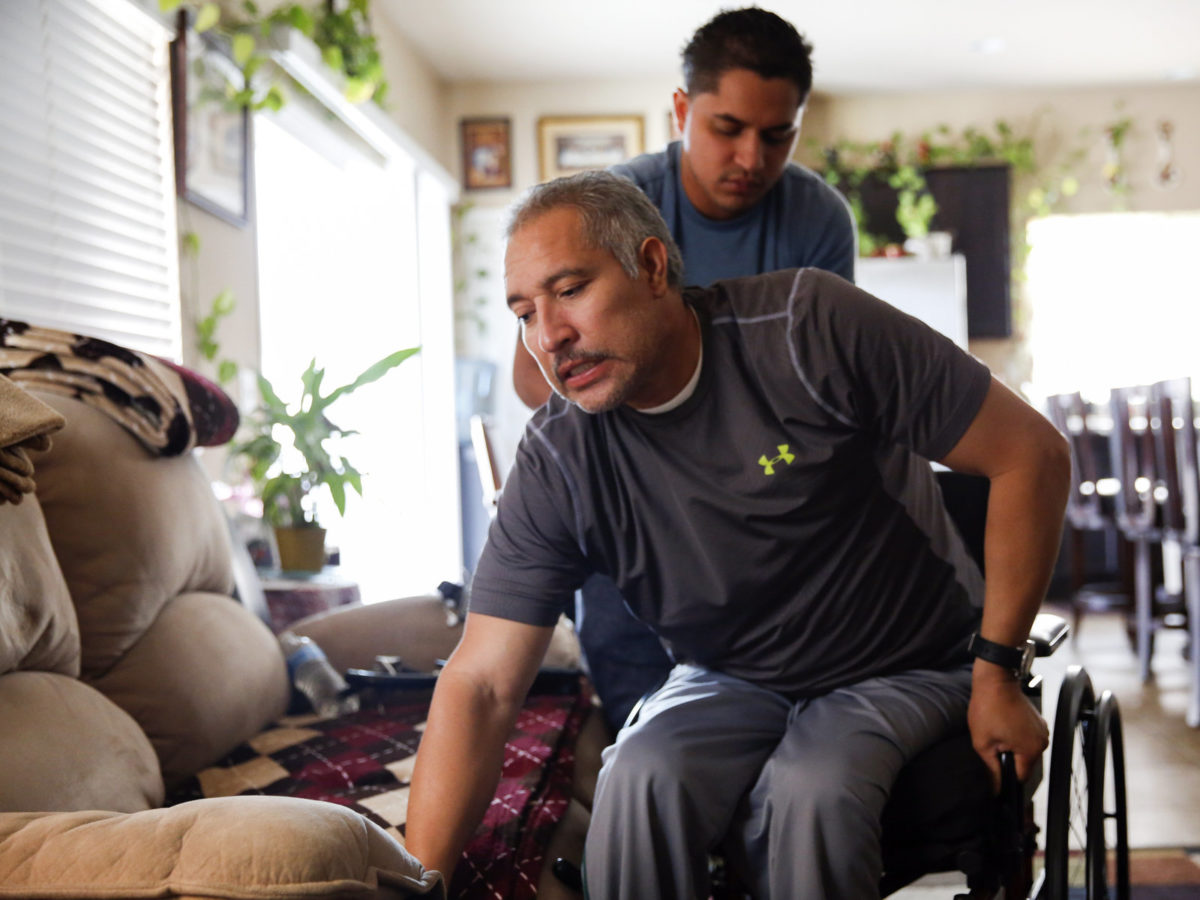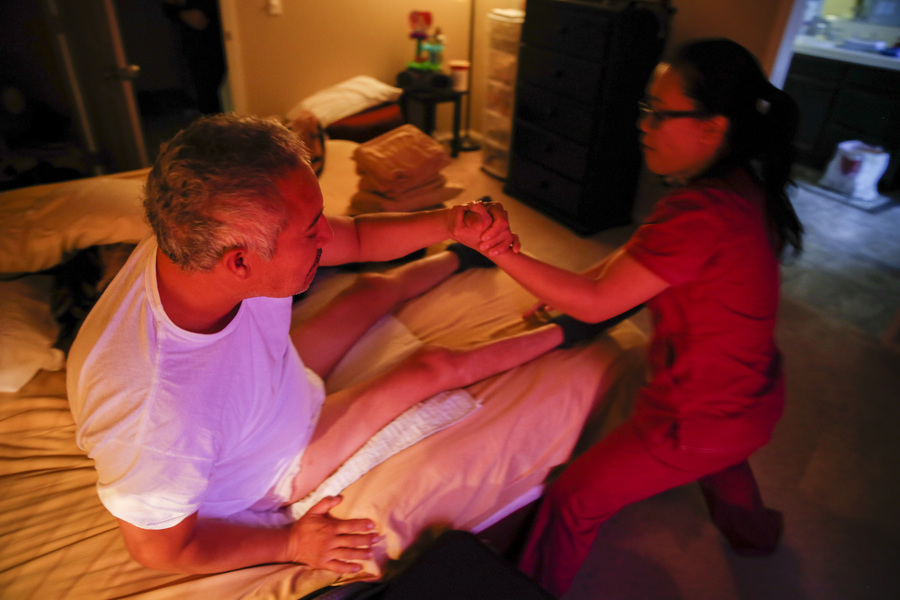“Insult to Injury”: A Special Investigative Report on Workers’ Compensation by ProPublica & NPR

Dear Friends,
This morning ProPublica and NPR published the first in a three-part investigative series on workers’ compensation. The second and third installments will run over the next two days. The series is looking at how workers’ comp has deteriorated as a result of concerted attacks by chambers of commerce and the insurance industry since 2003, and compares discrepancies across states.
Below you will find a link to the first installment of the series, a list of possible actions you could take to help raise awareness about workers’ comp in your state, and a quick reference guide with national data and a list of some (though clearly far from all) recommendations for needed policy change. We have included those recommendations that we feel will be most responsive to some of the issues raised throughout the series.
As always, be sure to check out the Workers’ Comp Hub for more resources, including NESRI’s recent fact sheet on legislative trends in workers’ comp. We hope this proves helpful to those of you who would like to use this opportunity bring attention to your important work.
The Demolition of Workers’ Comp
Over the past decade, states have slashed workers’ compensation benefits, denying injured workers help when they need it most and shifting the costs of workplace accidents to taxpayers.
— by Michael Grabell, ProPublica, and Howard Berkes, NPR

Take Action
| Want to do something to change how workers’ comp works in your state? There are no easily solutions, but here are some places you could start: |
- Share your story about your work-related injury or illness on ProPublica’s website.
- Share the ProPublica/NPR article with family, friends, and coworkers.
- Share the ProPublica/NPR article with the editorial board or the government or labor reporter for your local newspaper and let them know why they should write an article.
- Write an Op-Ed for your local paper in response to the series.
- Share your personal story or using some of the talking points below.
Reference guide for action
| If you want to raise awareness about problems with workers’ compensation and potential solutions, here’s a quick cheat sheet that you can use to develop talking points. There’s no way we could include every problem and solution in this list, but we hope that this will be a good resource. Please feel free to use any of the information here, and to contact us at |
Destructive Trends in Workers’ Comp
PROBLEMS
Every worker needs at least two things when injured or made ill on the job: medical care and, if they can no longer work, income support. Yet the way big business and insurance companies approach workers’ comp often keeps injured and ill workers from getting what they and their families need through arbitrary limits on access to comp, cuts and caps on benefits, and undignified and humiliating treatment throughout the process. These trends in workers’ comp increase the likelihood that workers will be further harmed by wrongful denials and delays or even “choose” to avoid the entire system, shifting the tremendous costs of dangerous workplaces from employers to workers, their families and communities.
Lots of people depend on workers’ compensation.
- 57,000 workers die each year from work-related injuries and diseases. Occupational diseases cause more deaths each year than vehicle accidents and homicides.[i]
- 5-8 million workers are injured or made ill each year on the job.[ii]
- The number of people disabled from work-related injuries and illnesses is expected to reach 8.5 million this year.[iii]
- The risk of an on-the-job injury is significantly higher for temporary workers.[iv]
But workers’ comp does not meet their needs.
- Many states have imposed cuts, caps, and time limits on income support for disabled workers.
- Only 1 in 20 people severely disabled by occupational diseases receives workers’ comp.[v]
- Fewer than 1 in 100 occupational cancer cases ever receive comp.[vi]
This means they have to turn elsewhere to make ends meet and afford the basics or do without.
- Workers’ comp covers less than 25% of the $200-250 billion in healthcare services, lost earnings, and home production losses related to work injuries and illnesses each year.[vii]
- Half of injured workers are dissuaded from ever filing for workers’ comp, and workers without health insurance are less likely to file a claim.[viii]
- Workers’ comp paid for only 6% of low-wage workers’ medical costs after severe work-related injuries.[ix]
And they’re stuck in a second-tier health care system that bases decisions on employers’ interests.
- Injuries and illnesses with multiple or complex causes, such as the aggravation of a pre-existing condition or repetitive motion injury, are effectively excluded in states that require virtually impossible evidence regarding causation.
- Employers enjoy increased control over doctors who function as “gatekeepers” to workers’ compensation through reserving the “right” to choose doctors and challenge their treatment decisions.
SOLUTIONS
Decisions about workers’ comp must be guided by and accountable to the needs and rights of injured and ill workers. Workers’ comp is a critical health care and social insurance program, not an unnecessary cost for businesses.
Some initial steps toward improving workers’ comp:
- Ensure access to comp for all workers who are hurt or made ill by work. Eliminate policies that exclude coverage for some workers and conditions, including pre-existing conditions and conditions related to aging.
- Restore the benefit of the doubt for workers, not employers, when it comes to getting comp. Reverse unjust legal rules that require workers to produce more and more evidence that work was the main cause or only cause of an injury or illness.
- Provide adequate income support for workers disabled by work-related injuries and illnesses, allowing them and their families to live in dignity as long as their earnings are reduced. Support should be based on actual loss of wages, ability to work and availability of employment, without arbitrary cuts, caps, and time limits.
- Allow workers and their doctors to make decisions, without interference by employers and insurance companies, about workers’ health needs and how workers receive care. Restore workers, not employers, right to choose doctors, and eliminate the “right” of employers and insurers to challenge doctors’ choices by subjecting workers to “independent medical exams” (or, more accurately, “insurer medical exams”).
These and other reforms are needed immediately to ensure all injured and ill workers are treated with dignity and respect. More systemic change is also needed to address deep-rooted problems in workers’ comp systems, which is not serving half of all injured and ill workers. Our current workers comp system is failing across the board to meet the human rights obligation of government to ensure and enable all people, without discrimination of any kind, to realize their rights to health care and economic security.
[i] Combining the over 4,000 deaths recorded by the Bureau of Labor Statistic’s Census of Fatal Occupational Injuries (CFOI) in 2014, representing deaths due to sudden traumatic injuries, with the 53,000 estimated annual deaths due to occupational diseases not captured by the CFOI. See Leigh, J. P., Economic Burden of Occupational Injury and Illness in the United States, The Milbank Quarterly (2011) at 744.
[ii] Taking the 3 million work-related injuries and illnesses reported by employers to the U.S. Department of Labor in 2014 as a baseline figure and adjusting for the 40-60% of injuries and illnesses that medical researchers consistently find, through reviews of health records, go unreported each year. See Boden, L., & Ozonoff, A., Capture‐recapture estimates of non-fatal workplace injuries and illnesses, 18 Annals of Epidemiology 500 (2008) (looking at 6 states, estimating 40%); Rosenman, K., et at., How much work-related injury and illness is missed by the current national surveillance system? 48 Journal of Occupational and Environmental Medicine 357 (2006).
[iii] Daub, H., Hardy, B. B., Kennelly, D., Podoff, D., Schieber, S.J. Social Security Disability Insurance, 1986-2006: Statement by the Social Security Advisory Board. Social Security Bulletin, 66 (3) (2005-2006): 1.
[iv] Temporary Work, Lasting Harm, ProPublica, Dec. 18, 2013.
[v] LaDou, Joe, The burden of occupational disease and workers’ compensation reform, Workers’ Comp Hub, Dec. 19, 2012.
[vi] Id.
[vii] Leigh, supra note 1.
[viii] Lakdawalla Reville & Seabury, How Does Health Insurance Affect Workers’ Compensation Filing?, 45 Economic Inquiry 286 (2007).
[ix] Bernhardt, Annette, et al., Broken Laws, Unprotected Workers: Violations of Employer and Labor Laws in America’s Cities (2009).
